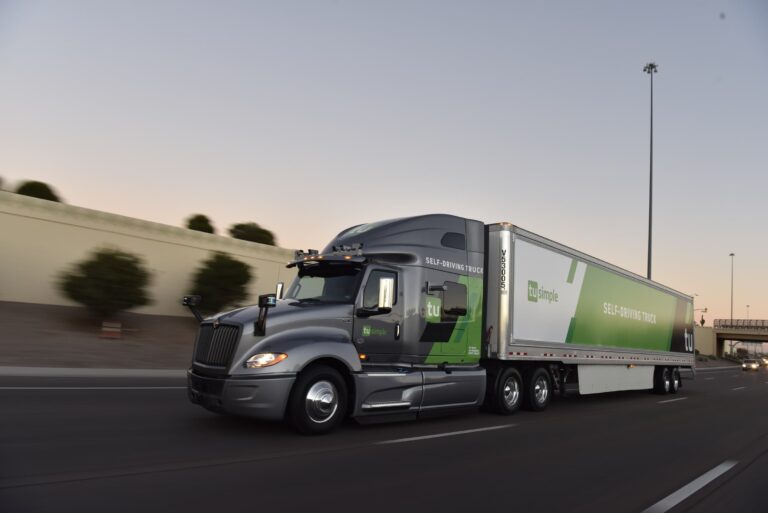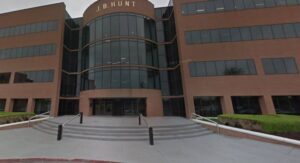SAN DIEGO — TuSimple, a self-driving truck company, said it has developed a proprietary automotive-grade camera and vision system that will go into volume production in in the second quarter of 2019 that will be deployed on TuSimple’s autonomous customer fleet by the third quarter of 2019.
As TuSimple’s entry into hardware design, the system offers enhanced reliability of autonomous operation and is a necessary step in the company’s quest to commercialize the first driverless truck.
Featuring Sony Semiconductor Solutions Corp.’s automotive complementary metal-oxide-semiconductor (CMOS) image sensor, the custom designed camera system allows for reliable night and low light autonomous operation. Adding nighttime operation to TuSimple’s already industry leading 1,000-meter perception system will allow fleets to increase truck utilization from an average of 50 percent, or 12 hours per day, to an average of over 80 percent.
TuSimple plans to increase its U.S. fleet to 50 trucks by June, with more to follow. The camera system designed for the company’s fully-autonomous Level 4 trucks is an important component of TuSimple’s ability to scale, especially as the company moves beyond its validation phase.
“Bringing reliable nighttime and low light operation to current perception systems in the market is an important step in the viability of autonomous driving, which is a strategic focus for us,” said Tsutomu Haruta, automotive business division deputy senior general manager, Sony Semiconductor Solutions Corp. “We’re pleased that TuSimple, the leading self-driving truck company appreciates the cutting-edge technology that Sony is known for.”
TuSimple has leveraged Sony Semiconductor Solutions Corp.’s automotive CMOS image sensor to create a set of camera systems for short, medium and long range that use TuSimple’s software to detect and process sharp images in real-time as far as 1,000 meters away. The system addresses complex imaging challenges such as instant light changes when entering and exiting tunnels, flaring during sunrise and sunset, and headlight glare. It also handles the LED flicker created by digital signage and traffic lights.
“Like human drivers, autonomous trucks’ perception systems are challenged by a wide variety of light conditions which are experienced every day while driving. We weren’t able to find a camera system on the market that fit our needs, so we created one,” said Dr. Xiaodi Hou, Founder, President and Chief Technology Officer, TuSimple. “The combined expertise of Sony Semiconductor Solutions Corporation and TuSimple has created a perception system that sees better than the human eye – night and day, rain or shine — in the most challenging driving conditions.”
This new camera system is designed to Automotive Safety Integrity Level (ASIL)-C, which is important for the validation of safety-related electronic systems that must be highly reliable in specific driving conditions as outlined in the ISO 26262 Functional Safety standard. As the system integrator, Sunny Optics will test the product and module, as well as develop and manufacture the automotive-grade product.
Dr. Hou will discuss the new camera system as part of his upcoming presentation at NVIDIA’s GPU Technology Conference (GTC) in San Jose, Calif., on Tuesday, March 19, at 3 pm. NVIDIA is an investor (through NVIDIA GPU Ventures) in TuSimple and NVIDIA DRIVE technology is a critical part of TuSimple’s self-driving trucks, which will be on display at the conference exhibition.
TuSimple’s trucks have a vision range of 1,000 meters—farther and better quality visibility than any other autonomous perception system today. TuSimple’s self-driving trucks utilize cameras, lidar and radar to see 360 degrees around for a pixel-level interpretation of the visible environment. TuSimple vehicles have three centimeters of control precision at all times—rain or shine.
With $95 million in new funding and daily autonomous trips hauling freight, the company is on its way to achieving its milestone of first driverless operations by the end of 2020 and delivering on its goal to create a safer, cleaner and more efficient trucking industry.
TuSimple officials said the company is working to transform the $800-billion U.S. trucking industry. According to McKinsey, full autonomy could reduce operating costs by about 45 percent, saving the trucking industry between $85 billion and $125 billion.
The Trucker News Staff produces engaging content for not only TheTrucker.com, but also The Trucker Newspaper, which has been serving the trucking industry for more than 30 years. With a focus on drivers, the Trucker News Staff aims to provide relevant, objective content pertaining to the trucking segment of the transportation industry. The Trucker News Staff is based in Little Rock, Arkansas.








